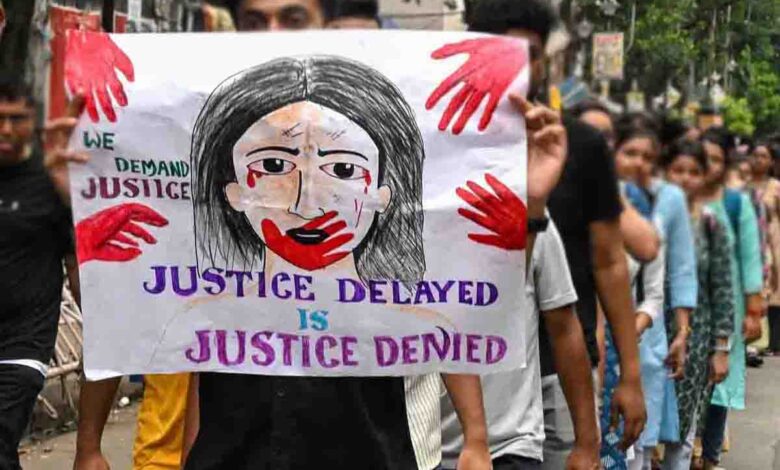Bengal’s rage, Bengal’s dilemma

VIEW POINT
 Romit Bagchi
Romit Bagchi
The British Viceroy Elgin wrote in his report to London in 1897: “Bengalis are a peculiar people. They don’t often believe what we tell them. They can critically think and, based on knowledge, are fiercely opinionated. Almost too progressive, it is not a problem we have encountered anywhere else in India.”
Let us now see what one of the leading figures in the Swadeshi movement who later turned to spiritualism under the influence of Sri Aurobindo, Nolini Kanta Gupta wrote about Bengal. According to him, impulses move Bengal’s actions and emotions sway Bengal’s thinking. “Bengalis do not work for the sake of work. Nor do they think for the sake of thinking. They are prone more to artistry than to utilitarianism. The fount of his actions is a sense of adventure. They are not practical people. They yearn for freedom not because they will be better fed and better clad after the country becomes free but because the country may become more beautiful after freedom.”
These two opinions when coalesced may make things a little clear about the distinctiveness of the Bengali people. They are critical, argumentative and progressive and at the same time, adventurous, impulsive and emotional. Another prominent characteristic of the Bengali people is that they have remained free down the ages from the grip of cut and dried beliefs exalted as traditions. This freedom from the traditional stereotypes, which gives them an open space in their subjective world, accounts for their ceaseless experimentations with life. An unshackled restlessness and a bubbly adventurism drive them to tread the least travelled road, signifying non-conformism, even iconoclasm that sometimes proves suicidal.
When many, including me, were convinced that the rebellious fire burning in Bengal’s collective psyche had been totally doused in its newfound passion for utilitarianism, the horrific RG Kar crime and its tumultuous aftermath happened. The spontaneous and unprecedented civil society movement forced me to change my idea. Erasing the class boundaries, the civil unrest spread fast, swamping all, from elitist intelligentsia to rickshaw pullers. After quite a long time, we are seeing such a spark of fiery rage and a full-throated cry against what is ugly and unjust: the unbridled political interference and criminalisation of public life with politicians becoming criminals and criminals becoming politicians. Though the ruling party keeps facing the collective wrath it will be a wrong analysis if it ignores the fact that it is a full-blooded manifestation of the crisis of political representation as a whole. This is why the movement has so far remained apolitical and those leading the charge are alert lest it be reduced to a convenient tool for political manoeuvrings by the parties which hope to storm to power riding piggyback on this public outrage.
The educated Bengali middle class- this is the class which pioneered the social, cultural, political and religious movements that deeply impacted the rest of India- has been spearheading this civil society movement. Although they are determined to show to the ruling clique that they will not relent until the vicious system based on the nexus between the rulers and the criminals is dismantled, they are seriously pondering over what will happen if this unrest culminates in the ouster of the incumbents. There are three parties which can form the next government if the Trinamool Congress is voted out: Communist Party of India (Marxist), Indian National Congress and Bharatiya Janata Party. The first two are unlikely to benefit. The CPI-M has become exhausted ideologically and organisationally following its uninterrupted rule for 34 years if we exclude the tenures of the coalition governments the party led after the Congress weakened in late 1960s. The Congress does not seem to have the organisational strength even to put up candidates for 294 seats in the Assembly. It has neither an accomplished leadership nor committed workers with the TMC having poached both. Then the obvious choice is the BJP which has already established itself as a viable alternative to the ruling party and this is precisely why the intelligentsia is dithering. Let me explain.
History says that the Bengali people evolved on their own distinctive lines separate from the Indian mainstream, perched as it was on the eastern fringe of the Aryan-.dominated region. They nurtured this separateness over the ages which gave them a regional individuality. They still love to cling to this distinct identity in their cultural superstructure. The Communists during their heyday fell back upon this Bengali trait to perpetuate their hegemony for quite a long time. They astutely built up and hyped an anti-Delhi narrative. The Congress’ revival under Indira Gandhi and her strategy of destabilising the State governments not under her thumb came handy for the Leftists. They would go the whole hog to brand the Congress as a party out to gobble up Bengal’s regional identity. TMC has been harping on the same even more belligerently than its predecessor. Mamata Banerjee assiduously and successfully built up her image as a fiery personification of Bengal’s regional pride, dubbing the BJP as ‘a party of the foreigners’ hell- bent on foisting a north Indian hegemony by trampling upon all that Bengal stands for: its liberal and inclusive cultural ethos which evolved over the millennia of time.
The Aryan civilisation influenced Bengali culture deep in its soul. They assimilated the Aryan civilisation’s lofty elements that teach us to climb from level to level up the hill of the divine. They, however, developed the body of its culture in line with the suppleness of its character, keeping it free from authoritative rigidity. Later, when the Muslim rule was established in India, Bengal lived independent of any central authority or an authority based outside Bengal. After the advent of British rule, they took English education first, churned out modern literature, launched social and religious reforms and pioneered the nationalist movement. These accomplishments further fortified their cultural pride which often gets amplified into an idiosyncratic sense of superiority.
Historically, BJP and its cultural fountainhead RSS have deep connections with Bengal. Bengal gave the party its founder while the RSS founder KB Hedgewar not just earned his medical degree from Calcutta Medical College but also came into contact with a revolutionary group inspired by Bankim Chandra Chatterjee. He was deeply influenced by the visions of Swami Vivekananda and Sri Aurobindo. Despite this, BJP has failed to endear itself to the Bengali intelligentsia. It may never if it nurtures a design to ram a hidebound and hegemonistic narrative down the Bengali people’s throat. If they want to come to power and rule the State they must be cautious and emulate Jyoti Basu who, despite being a Communist, never allowed the colour Red to look too red. If the saffron party ignores this they may face the same civil unrest even if it comes to power riding on the back of this collective rage.






